By Anne Kolker, Cruising Club of America New York Station
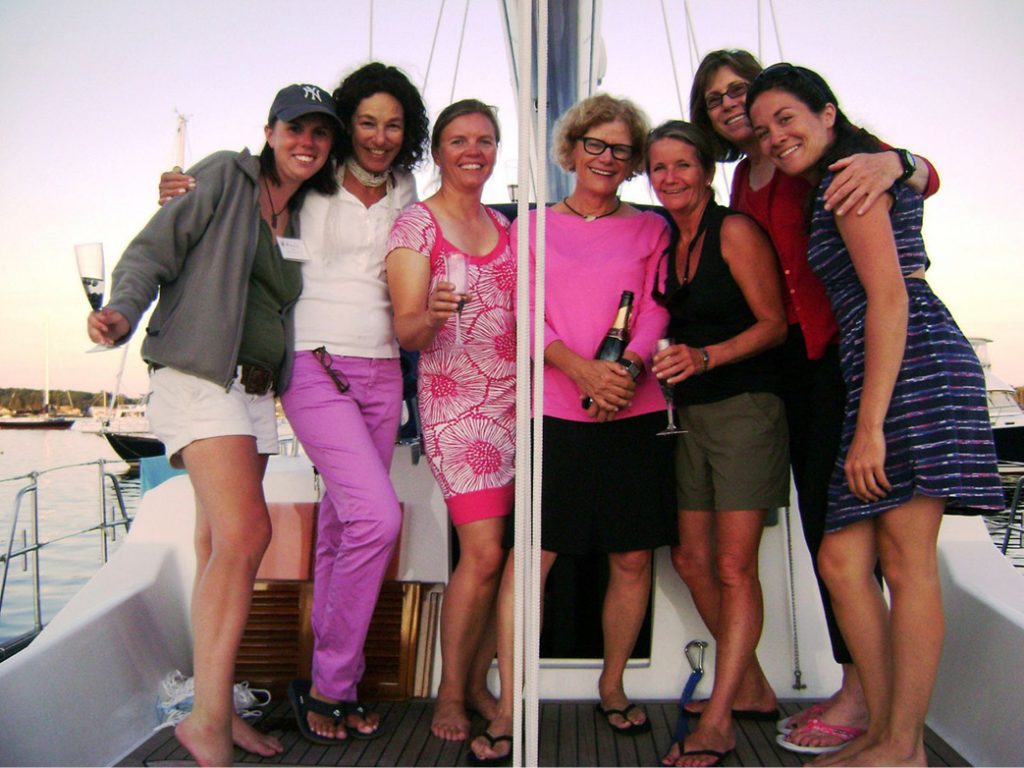
Étoile’s first offshore crew on the Lobster Run
I was lucky to grow up in a family of strong, motivated women. My grandmother was the force behind my grandfather’s successful business. My mother went to medical school and became a pediatrician in the early 1930s when women in medicine were unusual. One of my aunts became the alternate delegate to the United Nations. I was always told that I could become whatever I chose to be.
As a child, I remember a song with the lyrics, “Pick yourself up, dust yourself off, and start all over again.” So, I did just that many times. Having a goal made it possible to keep going when others seemed to suggest that my direction wasn’t likely to succeed.
I learned a bit about sailing from my aunt and uncle who took us out on their boat on occasion, but when I met my future husband, Alan Hilgenberg, I admitted that my sailing skills amounted to little more than knowing how to carefully fold the sail cover for storage instead of dumping it in a clump! We began sailing together on an Island Packet that Alan shared with a friend. When he sold his share in the boat, we moved up to a 42-foot Beneteau First.
We had much to learn. I insisted that we take an offshore course on the 88-foot schooner Ocean Star, owned by Ocean Navigator magazine. We sailed overnight from Key West to the Dry Tortugas and back. We learned a great deal about navigation, radar, standing watch, meal planning, weather, and radio calls. We subsequently sailed and cruised together along the East Coast, with offshore passages to Maine, and we chartered in the Caribbean. We planned to buy a bigger boat, retire, and spend our time sailing. Then, in 2002, we graduated to our Stellar 52 sloop-rigged yacht, which I named Étoile. With electric winches and in-boom roller furling, it was easy for two people to handle.
In 2008, when Alan was terminally ill, we considered trying to sell our beautiful sailboat, but the market wasn’t good, so we held off. Not long after, Alan passed away, and I became the sole owner and skipper of Étoile. I was quite timid about handling this complex boat at first. I had never raised or lowered the in-boom roller furling main, operated the anchor windlass, or brought the boat into a dock, but as I mastered these skills, I grew to feel comfortable being in charge.
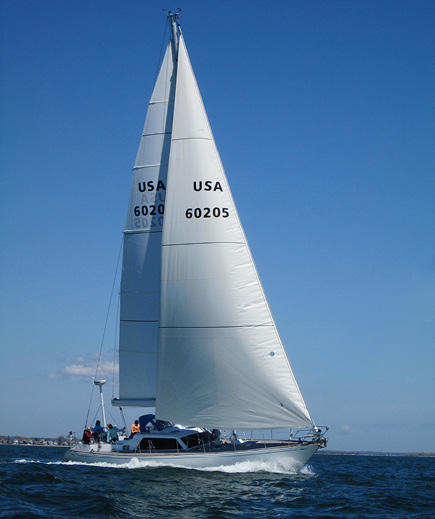
After her husband’s passing, the author became the sole owner and skipper of Étoile, pictured here in Fishers Island Sound.
A friend suggested that I consider joining an all-female crew in the 2009 Marion Bermuda Race. I had never done any racing, but I was told that being a doctor as well as a sailor would make me a valuable member of a team.
I met with Deb Gayle, a veteran of numerous Bermuda races, who recommended me to skipper Maren Erskine. Erskine interviewed me and ultimately accepted me as crew. It was a turning point in my sailing experience. I met a group of women who had far more sailing and racing experience than I did. We practiced every weekend. Luckily for me, the race boat was docked at a marina near where Étoile was moored in Stonington, Connecticut. I was able to spend nights on my boat and sail all weekend.
A fellow crew member, Garet Wohl, stayed with me instead of driving back and forth from her home in Salem, Massachusetts. Garet had just spent a year of weekends sailing her boat from Salem to Grenada by hopping down the East Coast and across the Caribbean, both single handedly and with help. When she asked me about my sailing goals, I said that I wanted to feel as comfortable being in charge of my boat as I was being in charge of the operating room. She promised to help.
We started the 2009 race, but turned back due to mechanical issues and concern for an oncoming storm. Since we all had booked return flights from Bermuda, we flew there to see the race wrap up. Calling ourselves “the singing nuns,” Garet and I wrapped ourselves in red kraft paper to resemble buoys and sang “Get Me to Bermuda on Time” to the tune of the My Fair Lady’s “Get Me to the Church on Time.” We had fun as the entertainment. I told my shipmates that we would do the race on my boat next time.
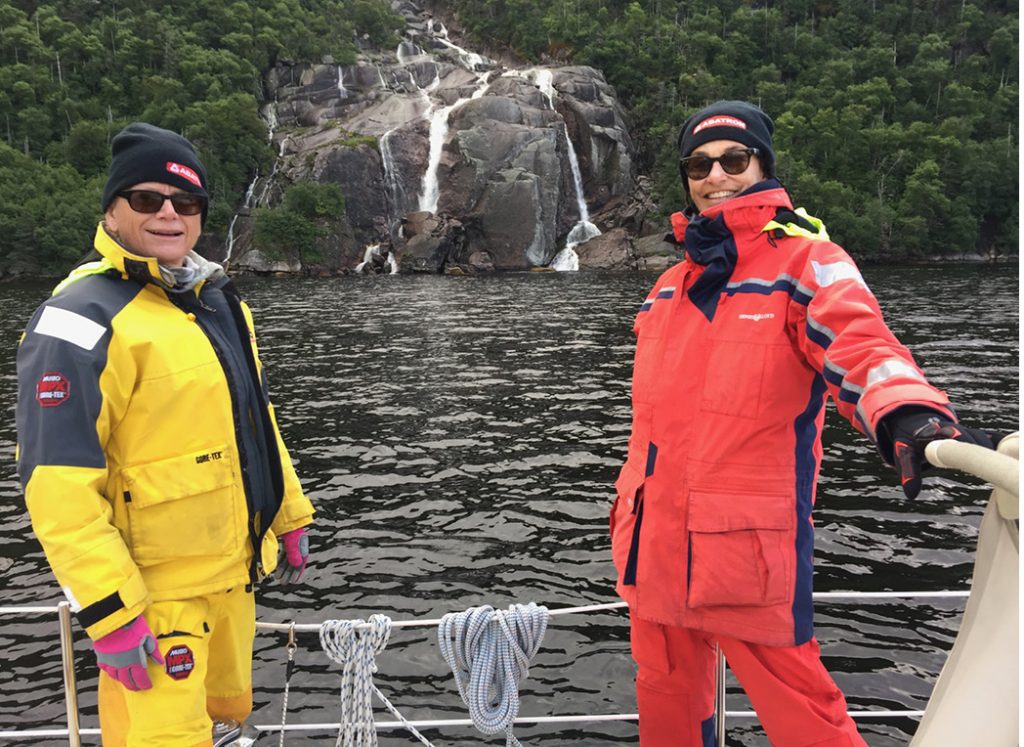
Chilly fun in Newfoundland
I knew that I should get some ocean-racing experience on Étoile before entering her in the Bermuda race, so, I signed up for the Lobster Run from Stonington to Boothbay Harbor, Maine. It was a Category 2 race, which meant that we wouldn’t be out of reach of Coast Guard help if we needed it. My crew of seven women included several from the 2009 Bermuda attempt and a few more from my yacht club in Stonington. It was a new experience to be helpless in the Gulf of Maine currents, which pushed us backwards when the wind was too light to propel us. I was thrilled to cross the finish line on a beautiful sunny day.
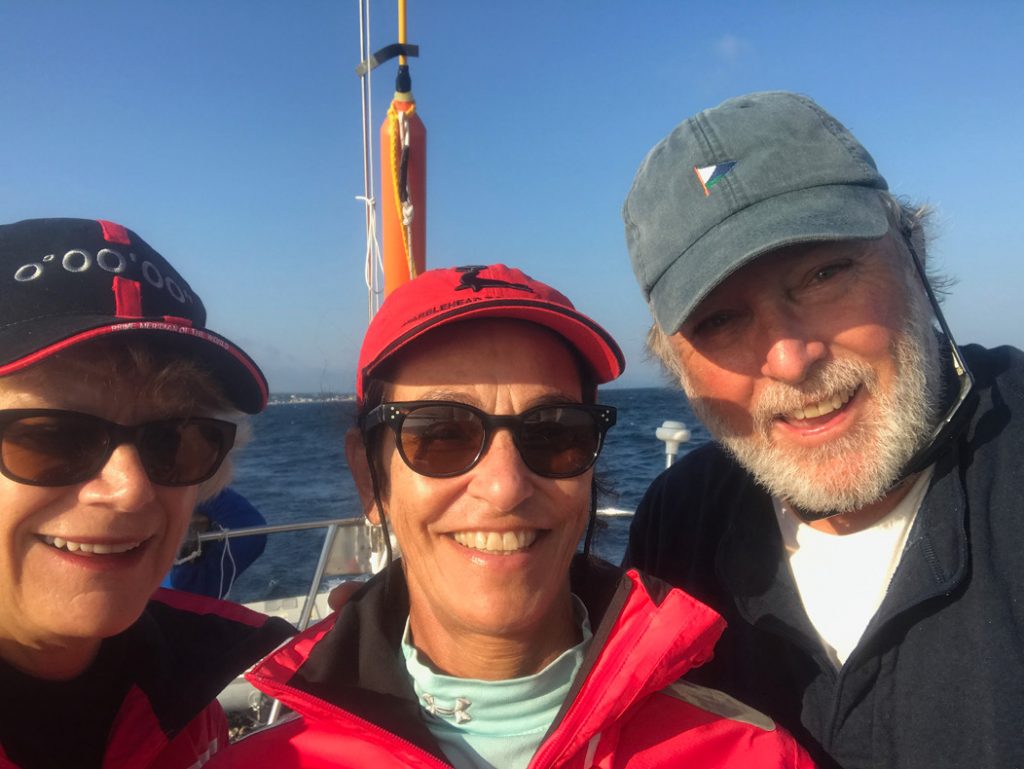
Taking off down the Newfoundland coast with Garet and Dan Colt, a surgeon from Memorial Sloan Kettering Cancer Center
When a man at the Boothbay Harbor Yacht Club inquired about the race, I told him I’d been aboard Étoile.
“Isn’t that the all-female crew?” he asked.
I nodded.
“ And you got here!”
I calmly told him that women actually know how to sail. Perhaps that too was a turning point.
I decided to try a Marion Bermuda Race with an all-female crew in 2011. It took time and dedication to prepare Étoile for a Category 1 race. Because Étoile isn’t a one-design, I reached out to the yard in Taiwan to get the documentation that allowed my boat to be rated by US Sailing. Having those details helped me to organize and understand my boat well enough to feel confident that we could go offshore where anything can happen.
We practiced for several months and were ready when we delivered the boat to Marion. The race start was thrilling — and somewhat terrifying: my crew told me that the captain takes the boat over the starting line, something I had never done. The race began with us close-hauled in 25–30 knots of wind. I wondered if I had lost my senses, but my crew seemed calm and that helped.
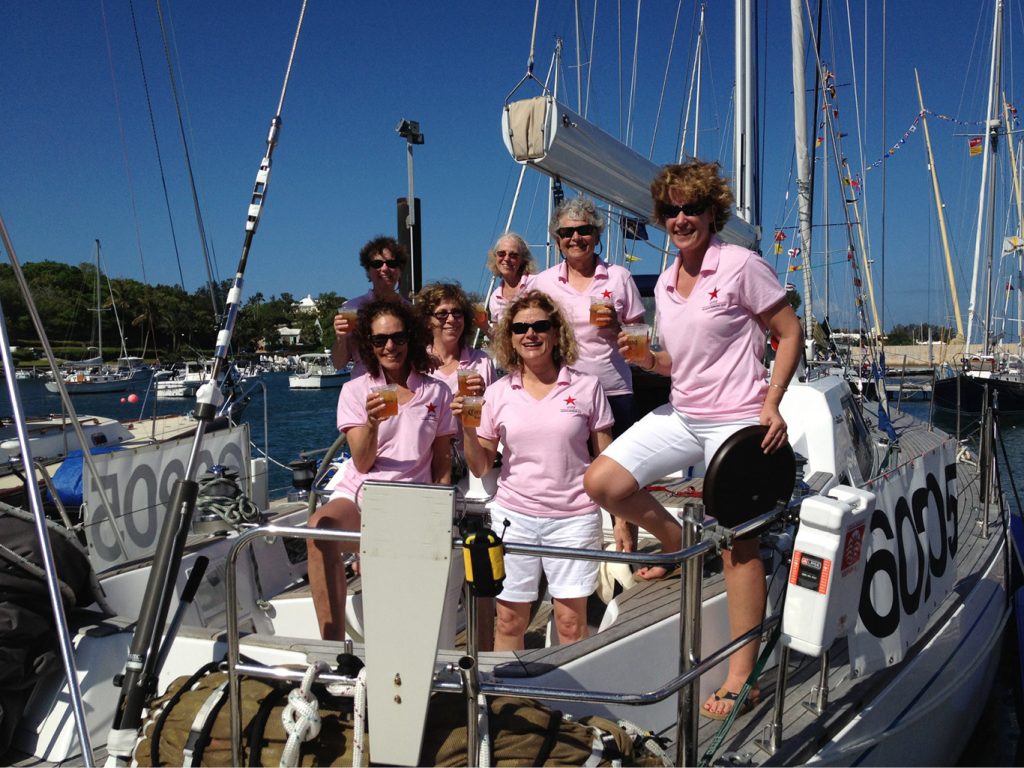
“The Ancient Mariners” celebrate completion of the 2013 Marion Bermuda Race.
Each day brought different weather. We had one day where there was so little wind that a sea turtle swam around us while one of the crew painted her nails. When we crossed the rough and lumpy Gulf Stream, I understood why some say it’s like sailing over Volkswagens. As we neared Bermuda, a wave washed into the aft lazarette where some electronics were stored but not protected. Suddenly the chart plotter indicated that we were in Africa. Then it went blank.
Luckily, Garet, my navigator, had a backup computer with GPS so we could steer around the race marks without ending on a reef. We finished the race with a respectable time — not last! When we were greeted at the dinghy club with a Dark ‘n’ Stormy, I thought, “Been there, done that.”
At the end of the summer in 2012, I began to think about doing the Marion Bermuda Race again. Maybe I would place higher; at the very least, I would know what to expect. Not everyone from my previous crew was available, but I got inquiries from other women who had sailing experience and wanted to join me. Why not?
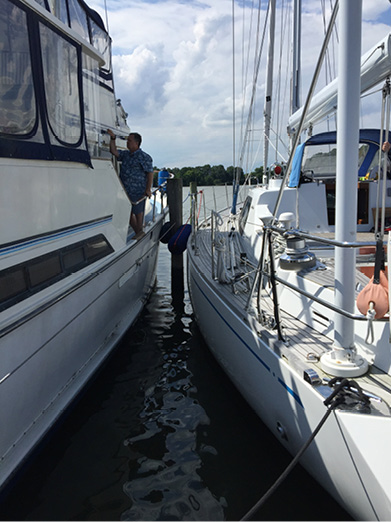
Very proud of my docking skills
So, we practiced and planned. This time I was smart enough to provision for meals in both directions instead of thinking that I could easily buy prepared food in Bermuda. A few days before the race, our youngest member fell down a flight of stairs and was unable to join us. I replaced her with a very seasoned older woman who was willing to come at the last minute. The crew change allowed us to win the Ancient Mariners Golden Teapot Trophy, awarded to the crew with the oldest average age. Sometimes, things just work out.
As I continued to enter Bermuda races, it became evident that mine was the boat that women wanted to join. I realized that women were often reluctantly added to crew to serve as the cook. On my boat, everyone did everything. We all learned how to run the generator so that we could keep the batteries charged. We practiced crew-overboard in early-spring challenging winds. We deployed and recovered a 100-foot section of my Jordan Series Drogue. Each crew member contributed a frozen meal in two large portions to feed us in both directions. I knew that the race was as much about the entire experience as it was about racing. My boat wasn’t designed as a racing machine, but it was sturdy in all conditions and easy to sail.
So far, I have completed seven offshore races with all-female crew. My last race, from Newport to Bermuda, included the husband of one crew who asked to join us for the experience. I agreed to have him if he would accept the cook designation. We had a thrilling start, and we had fun despite running out of wind and motoring the last day to finish. It’s always about the journey.
In addition to offshore races, I have done lots of cruising along the East Coast and in the Caribbean. Garet and I took her Contessa 32 on a crazy adventure across the Atlantic from Gran Canaria to Grenada.
One my great inspirations is the late physicist Rosalyn Yalow, who won the Nobel Prize for developing radioimmunoassay, a powerful tool for following compounds’ movements in cells. Yalow kept a sign in her laboratory coat closet that said, “Whatever women do, they must do twice as well as men to be thought half as good. Luckily, this is not hard!” I was thrilled to meet Dr. Yalow when she gave a talk at my hospital. She indicated that she was simply doing what interested her. That’s the best way to keep going. ■
Dr. Anne Kolker has hosted all-female crews in offshore races from New England to Bermuda and inspired dozens of women to seek out sailing opportunities. In 2023, the Boat Owners Association of the United States and the National Women’s Sailing Association honored her with the Leadership in Women’s Sailing Award, which recognizes an individual with a record of achievement in inspiring, educating, and enriching the lives of women through sailing.
Anne’s crews are five-time winners of the Faith Paulson Trophy, awarded to the fastest all-women crew in the Marion Bermuda Race. Anne has offered her medical knowledge on ocean crossings and safety at sea, has been instrumental in developing race strategies, and has lectured to teams about safety practices. She has given lectures at NWSA events and is a leader at Safety at Sea programs, preparing crews for unexpected medical events. She is credited with saving the life of a crew member during a transatlantic passage. Besides being a CCA member, she’s a member of Stonington and New York Yacht Clubs and Ocean Cruising Club.
“The best thing about sailing is every time you go sailing you learn something,” she says. “Confident competence is my constant goal. Women are great shipmates with many competencies.”
With thanks to the Cruising Club of America in whose magazine, Voyages Issue 66 this article first appeared, and Voyages editors Amelia & Robert Green.
The Cruising Club of America (CCA) is a collection of 1,400 ocean sailors with extensive offshore seamanship, command experience, and a shared passion for making adventurous use of the seas. Their experiences and expertise make them, collectively, one of the most reliable sources of information on offshore sailing. Visit cruisingclub.org to learn more.




